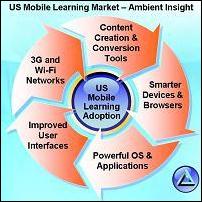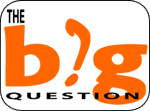
There are many challenges with setting up any sort of mobile learning program, not the least of which is the diversity of devices. A typical audience may have several types of PDAs, from Palm, to Windows Mobile, to Symbian. A vast majority certainly has a mobile phone, albeit, the platforms for mobile devices range significantly.
There is one feature, however, that almost every mobile device currently has that can provide your group with a jumping off point to create a mLearning strategy- Text Messaging. In this article, we’ll provide two examples that you can successfully deploy today and the steps involved in creating these solutions.
First- What type of content is best for text messaging?
The challenges with using text messaging as a learning platform is limitations in message size, interactivity, and tracking.
Message Size: Some pure SMS services and phones have character limits of 300 characters or less. This consideration means that you must plan carefully what content you deploy and how you use that content. In this article, we are going to use two types of learning content- Data Bursts & Game Show interactions. Both of these content types are tailored around the character limits and other constraints in Text Messaging.
Interactivity: In the Game Show example below, you’ll see that text messaging provides a unique interactivity experience that often isn’t found in other eLearning methods. mLearning through Text Messaging allows two way interaction any time, any where.
Tracking: One challenge in using a Text Messaging platform – especially in the ‘Rapid and Cheap’ method- is that SCORM tracking is mostly a manual process. In both of the examples below, consider this more of an enhancement on learning versus direct SCORM tracked content.
Example 1- Data Bursts
In this example, we are working with a working with a field sales force at a technology company. As with most companies, each day a sales consultant is training is one less day they are selling. A typical training opportunity usually consists of spending time on technical aspects of a product  and not on soft skills.
and not on soft skills.
To improve her team’s sales skills, a sales manager polled her top sales consultants as to key aspects of different products that resulted in sales. She also gathered information from various sales training courses. Gathering all of the information collected, she organized this into 100-200 word chunks like the following two examples:
Sales Tip: Use Examples- ABC corporation saved $100 a month by switching from RDI 750 to 1000.
Did You Know: The RDI 1000 can handle 5 times the users as the 750.
The sales manager then created draft messages in her Outlook, using the properties field to send a message each day for a month. A couple of hours of work has resulted in 30 days of learning content delivered to her sales force. Content like this can be customized to coincide with product launches, campaigns or contests.
Example 2- The Game Show
A customer service group would like to add more fun and interaction into their new hire classes but they cannot budget for gaming software. One trainer noticed that everyone had mobile phones, normally required to be off during class.
The trainer set up two ‘Game Show’ contests. The first uses the mobile phone as a ‘buzzer’. On a PowerPoint presentation, the trainer displays a question or challenge and an e-mail address. All of the participants must access certain content in a reference system and text message the trainer’s e-mail with the answer.

In this example, the trainer also went one step further and sent random text message questions to his class and students would respond with the correct answer. In both cases, the trainer could track who got the answers correct first and, by keeping responses, could track the effectiveness of various training modules by the number of correct vs. incorrect answers.
The second ‘Game Show’ contest involved a survivor type scavenger hunt. The new Customer Service representatives were sent to random retail stores they supported. Challenges were sent to their mobile phones and the students would text back their answers.

In one example, the students were challenged to find the price of a specific model of digital camera. The students would search the store to find the camera and either take a picture with their phone and send it or text the answer back. This gave the students a customer experience in searching for products their customers would want to find.
Setting up your users and content.In both of these examples, the biggest challenge isn’t in the actual use of text messaging, but in the initial set-up.
In the first example, the sales manager created a small web form asking her sales representatives to ‘opt in’ to using text messaging versus using an e-mail address. If the sales rep used their mobile phone, they were asked who the provider was. Almost every provider has an e-mail address linked to a mobile phone, such as Alltel, whose phone e-mails look like this-
9030000000@message.alltel.com.
The sales manager then could create a distribution list in Outlook with either the phone e-mail or the users personal e-mail depending on their preference.

In the second example, the teacher also asked for an opt-in, and if a student chose not to, either by not having the service or because they were concerned about going over their text package, they were offered the option of simply using e-mail.
CONTENT IS KING- No matter what path you use when using Text Messaging as an mLearning solution, remember that your content should be brief, to the point, and powerful.
In future articles, we’ll discuss more advanced uses of Text Messages including setting up campaigns and using SMS providers to send, track, and create branching content through Text Messaging.
mlearning m-learning mobile-learning mobile+learning podcasting iphone apple web+2.0 learing+2.0 eLearning


 2mLearn.mobi
2mLearn.mobi





 The challenge is.. your employee is driving to visit a client, how will your training get their attention? Why listen to training versus listening to the latest U2 album? mLearning, like all learning modes needs WIIFM- What's In It For Me... Without WIIFM, it is just another term or fad.....
The challenge is.. your employee is driving to visit a client, how will your training get their attention? Why listen to training versus listening to the latest U2 album? mLearning, like all learning modes needs WIIFM- What's In It For Me... Without WIIFM, it is just another term or fad.....



 Listing everything from Health to Learning Aids, there are a lot of ideas and concepts here that we as designers normally don't think about.
Listing everything from Health to Learning Aids, there are a lot of ideas and concepts here that we as designers normally don't think about. Keeping with the theme of foreign languages and online learning, I found a website that uses blogs, rss, podcasts, and other web 2.0 technologies to teach Mandarin Chinese . As China continues to be a huge player in the global economy, businesses and schools are rushing to learn the language.
Keeping with the theme of foreign languages and online learning, I found a website that uses blogs, rss, podcasts, and other web 2.0 technologies to teach Mandarin Chinese . As China continues to be a huge player in the global economy, businesses and schools are rushing to learn the language. 



 Where we as eLearning practitioners seem to fail is we keep looking for the perfect device to support mLearning. Instead, it is time to realize that the perfect mLearning device is whatever device our audience already has.
Where we as eLearning practitioners seem to fail is we keep looking for the perfect device to support mLearning. Instead, it is time to realize that the perfect mLearning device is whatever device our audience already has.
 us all right now: Are our models (ISD, ADDIE, HPT, etc.) relevant in the future?
us all right now: Are our models (ISD, ADDIE, HPT, etc.) relevant in the future?


 I've seen many presentations over the past few years declaring mLearning 'the future'. I would like to challenge that not only is the future now, the uptake of mLearning is greater than most of us realize.
I've seen many presentations over the past few years declaring mLearning 'the future'. I would like to challenge that not only is the future now, the uptake of mLearning is greater than most of us realize. of teachers producing podcasts for their students.
of teachers producing podcasts for their students.



 materials in a big black binder that included hard copy lecture notes and DVD videos of the learning materials. And this year, instead of doing that we gave every participant a video iPod. Doing this actually cost us $200 LESS per person to use the iPods than for the binders, and that was just for duplication costs."
materials in a big black binder that included hard copy lecture notes and DVD videos of the learning materials. And this year, instead of doing that we gave every participant a video iPod. Doing this actually cost us $200 LESS per person to use the iPods than for the binders, and that was just for duplication costs."
 and not on soft skills.
and not on soft skills.



 Click Here to eMail Questions, Comments & Requests
Click Here to eMail Questions, Comments & Requests








